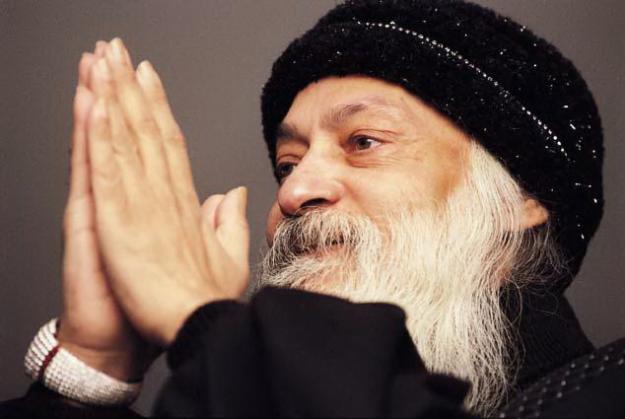Bhagwan Shree Rajneesh "Osho"
 |
Life History : Bhagwan Shree Rajneesh was born (1931) Rajneesh Chandra Mohan in Kuchwara, a town in central India. At the end of his life (1990) changed his name to Osho
His parents' religion was Jainism. He received enlightenment on 1953-MAR-21 at the age of 21.
He obtained a masters degree in philosophy from the University of Sagar. He taught philosophy at the University of Jabalpur for nine years and concurrently worked as a religious leader. In 1966, he left his teaching post and gave his full attention to teaching his disciples.
In 1974, Osho moved from Mumbai to Pune. Some anti-cult groups have claimed that this decision was made because of local opposition from the public in Bombay. In reality, it was to establish an ashram which would provide larger and more comfortable facilities for his disciples.
In 1979, he saw his movement as the route to the preservation of the human race. He said: If we cannot create the 'new man' in the coming 20 years, then humanity has no future. The holocaust of a global suicide can only be avoided if a new kind of man can be created." He taught a syncretistic spiritual path that combined elements from Hinduism, Jainism, Zen Buddhism, Taoism, Christianity, ancient Greek philosophy, many other religious and philosophic traditions, humanistic psychology, new forms of therapy and meditation, etc.
In 1981 he left India because of health problems. He went to the United States in order to obtain advanced treatment. The group settled on the 65,000 acre "Big Muddy Ranch" near Antelope, Oregon, which his sannyasins had bought for six million dollars. The ranch was renamed Rajneeshpuram ("Essence of Rajneesh"). This "small, desolate valley twelve miles from Antelope, Oregon was transformed into a thriving town of 3,000 residents, with a 4,500 foot paved airstrip, a 44 acre reservoir, an 88,000 square foot meeting hall..." Many of the local folks were intolerant of the new group in their midst, because of religious and cultural differences.
One manifestation of this intolerance was the town's denial of building permits to the followers of Rajneesh. Some buildings were erected on the ranch without planning board approval. When officials attempted to stop the construction, their office was firebombed by unknown person(s). When the local city council repeatedly refused to issue permits for their businesses, some sannyasins elected themselves to the city council. The town of Antelope was renamed City of Rajneesh.
He was also charged with lying on his immigration papers. He entered an "Alford Plea," commonly called a no-contest plea. His lawyers suggested that he do this because of concerns over his health and safety if he had to spend more time in prison. He was given a suspended sentence on condition that he leave the country. He returned to Pune, India in 1987, where his health began to fail.
Here, he abandoned the name of Rajneesh and adopted "Osho". Osho was derived from the expression "oceanic experience" by William James. He died in Pune in 1990. Various rumors spread that he had been poisoned with thallium by the CIA, had been exposed to damaging doses of radiation by the U.S. authorities, or had heart failure. His death certificate lists heart failure as the cause of his death.
At its peak, they had about 200,000 members and 600 centers around the world. They were targeted by many anti-cult groups as an evil, mind control cult.
Osho Philosophy : Osho developed new forms of active medication. The best known is Dynamic Meditation which often starts with strenuous physical activity followed by silence and celebration. These were expected to lead the individual to overcome repression, lower their personal inhibitions, develop a "state of emptiness", and attain enlightenment. The person then would have "no past, no future, no attachment, no mind, no ego, no self."
Prior to 1985, the disciples wore red robes, and a necklace of 108 beads which had an attached picture of Rajneesh. Osho assigned a new name to each of the disciples. Men were given the title "Swami"; women were called "Ma". Although most members lived a frugal, simple lifestyle, Rajneesh himself lived in luxury. His collection 27 Rolls Royce's, given to him by his followers, was well known. Anti-cult groups claimed that he urged his disciples to sever their connection to their families of origin. It is true that he felt that the institution of the family was out of date and that it should be replaced with alternate forms of community and ways of caring for children. However, he actually encouraged individual disciples to make peace with their families. Many became disciples themselves, including Osho's own parents.
He taught a form of Monism, that God was in everything and everyone. There is no division between "God" and "not-God". People, even at their worse, are divine.
Recent Developments : Osho repeatedly stated that he would not appoint a successor to replace him after his death. He viewed each disciple as his successor. However, before his death, he appointed an inner circle of 21 individuals to look after the functioning of the meditation resort at Pune and handle administrative affairs relating to his work. They now operate about 20 meditation centers worldwide. Rajneesh's main influence now is through his voluminous writings; they are read by many New Agers as well as followers of Osho.
-----------------------------------------------------
Mail to : Ahimsa Foundation
www.jainsamaj.org
R2191